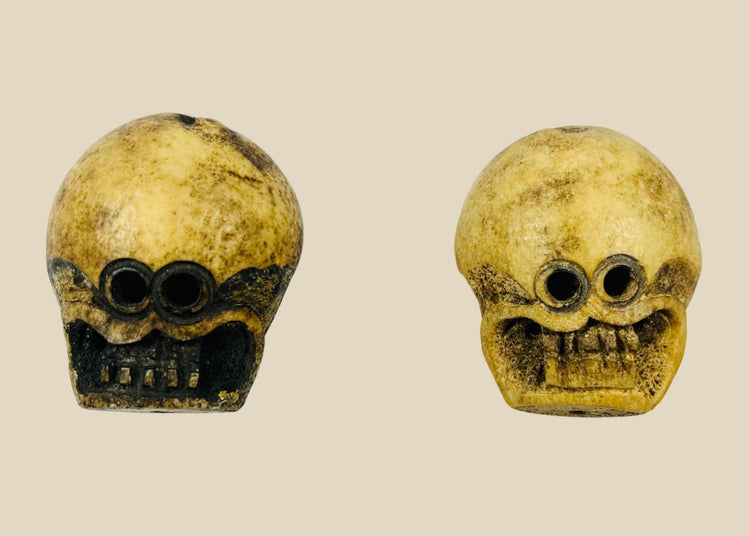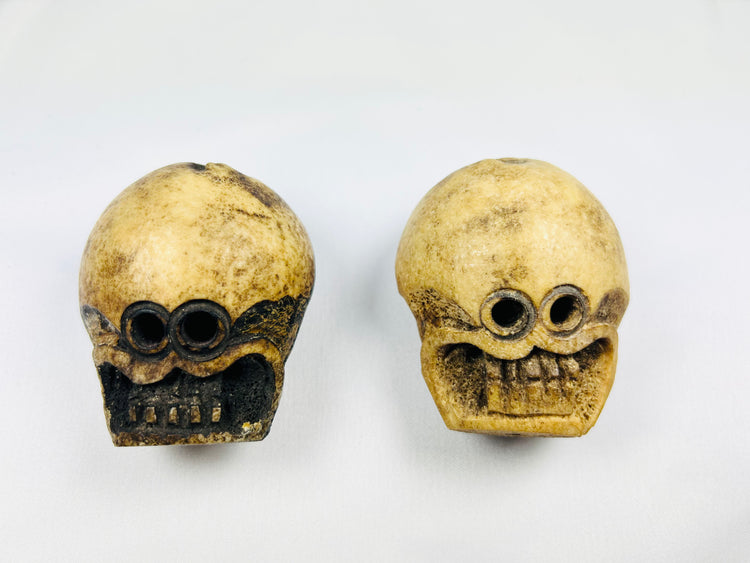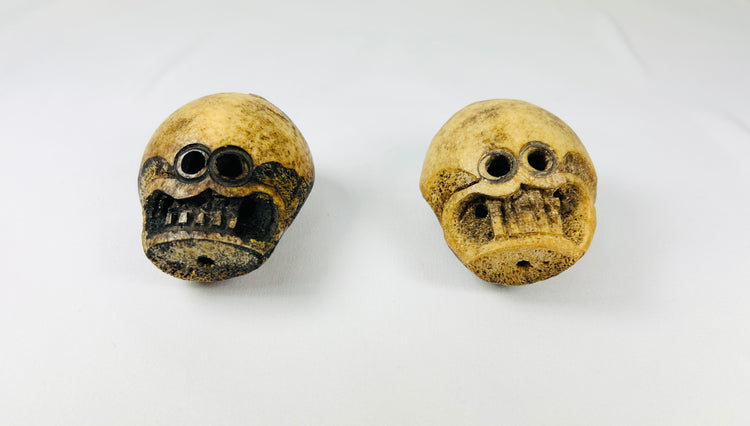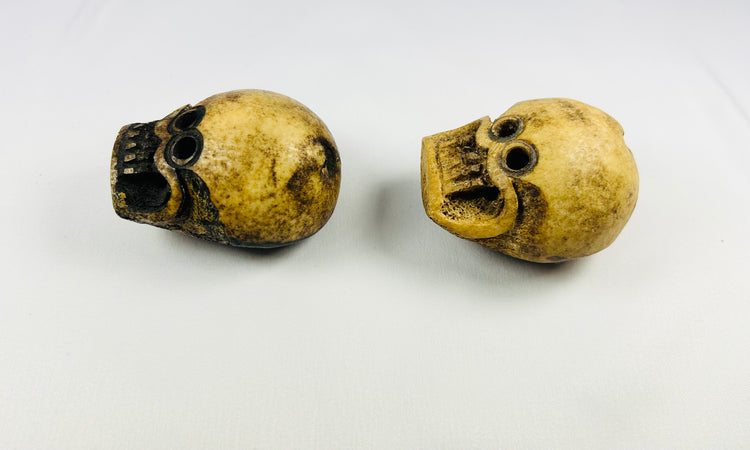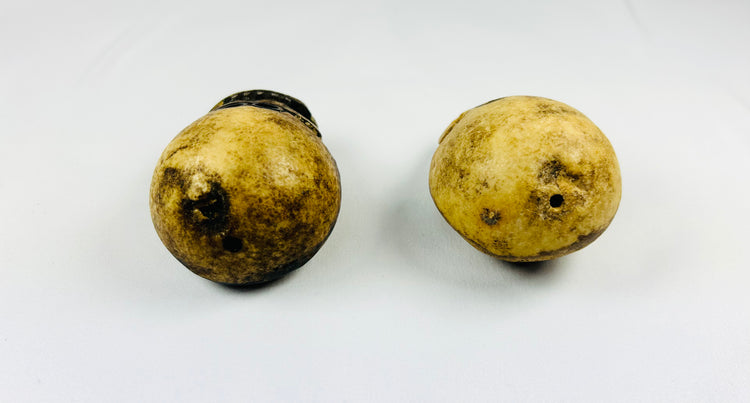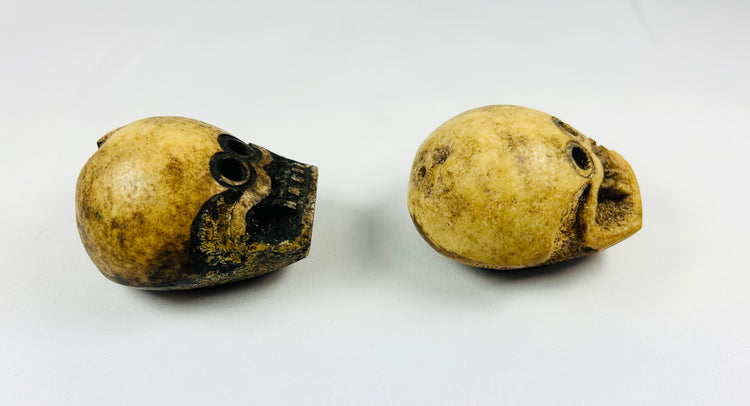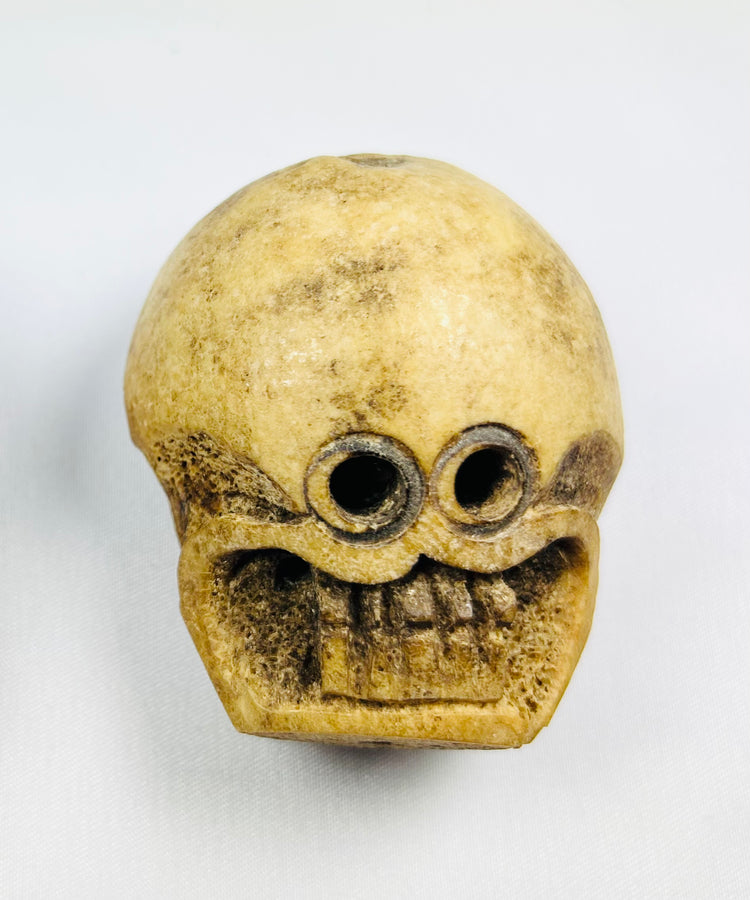A Pair of Rare Large Tibetan Kapala Citipati Beads | 18th-19th Century
Description
More
Less
Historical Context & Origin
Region: Tibet, Himalayan Buddhist tradition
Material: Human femur bone, hand-carved with vertical suspension holes
Period: 18th–19th Century
Description
A rare pair of large Kapala Citipati beads, carved from human femur bones with deep, intricate detailing. Each bead is pierced with a vertical hole from top to bottom, indicating they were once strung on silk or cloth cord as part of a larger ceremonial necklace. Measuring approximately 2.5 in by 2 in by 1.25 in, these beads embody the Tibetan Buddhist meditation on impermanence, mortality, and spiritual transcendence.
Features
- Pair of large carved ritual beads from human femur bone
- Intricate hand-carved iconography referencing Citipati imagery
- Vertical suspension holes for stringing on ritual cord or necklace
- Fine surface patina with visible age and devotional use
- Strong presence and spiritual resonance
Cultural & Ritual Significance
In Tibetan Buddhism, Kapala (skull cups) and related bone ritual objects were used to confront mortality and the transience of life. The Citipati—“Lords of the Charnel Ground”—symbolize liberation from worldly attachments and spiritual awakening through death imagery. Objects like these beads were not ornaments but sacred tools in meditation and ritual practice, believed to hold spiritual potency from their material and imagery. Their function was both symbolic and practical, assisting practitioners in meditation on impermanence and rebirth.
Condition
Excellent condition for age. Fine bone patina with wear consistent with handling and ritual use. Carvings remain sharp and well-defined; suspension holes intact. No modern restoration detected.
Dimensions (approximate)
Height: 2.5 in
Width: 2 in
Depth: 1.25 in
Age
18th–19th Century, Tibetan Buddhist ritual tradition
Learn More
Explore more ritual objects and cultural artifacts in our Ethnographic Relics: Cultural Artifacts Collection.
Delve into the history and symbolism of the Kapala skull-cup and Tibetan ritual bone art in The Kapala: History, Symbolism and Use.
Description
Historical Context & Origin
Region: Tibet, Himalayan Buddhist tradition
Material: Human femur bone, hand-carved with vertical suspension holes
Period: 18th–19th Century
Description
A rare pair of large Kapala Citipati beads, carved from human femur bones with deep, intricate detailing. Each bead is pierced with a vertical hole from top to bottom, indicating they were once strung on silk or cloth cord as part of a larger ceremonial necklace. Measuring approximately 2.5 in by 2 in by 1.25 in, these beads embody the Tibetan Buddhist meditation on impermanence, mortality, and spiritual transcendence.
Features
- Pair of large carved ritual beads from human femur bone
- Intricate hand-carved iconography referencing Citipati imagery
- Vertical suspension holes for stringing on ritual cord or necklace
- Fine surface patina with visible age and devotional use
- Strong presence and spiritual resonance
Cultural & Ritual Significance
In Tibetan Buddhism, Kapala (skull cups) and related bone ritual objects were used to confront mortality and the transience of life. The Citipati—“Lords of the Charnel Ground”—symbolize liberation from worldly attachments and spiritual awakening through death imagery. Objects like these beads were not ornaments but sacred tools in meditation and ritual practice, believed to hold spiritual potency from their material and imagery. Their function was both symbolic and practical, assisting practitioners in meditation on impermanence and rebirth.
Condition
Excellent condition for age. Fine bone patina with wear consistent with handling and ritual use. Carvings remain sharp and well-defined; suspension holes intact. No modern restoration detected.
Dimensions (approximate)
Height: 2.5 in
Width: 2 in
Depth: 1.25 in
Age
18th–19th Century, Tibetan Buddhist ritual tradition
Learn More
Explore more ritual objects and cultural artifacts in our Ethnographic Relics: Cultural Artifacts Collection.
Delve into the history and symbolism of the Kapala skull-cup and Tibetan ritual bone art in The Kapala: History, Symbolism and Use.
You May Also Like






















